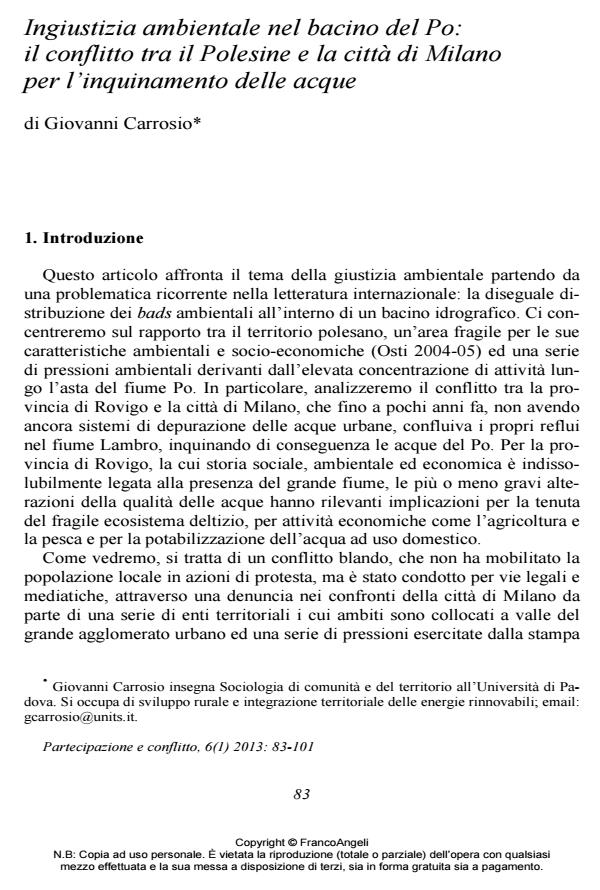Environmental injustice in the Po river basin: the conflict between Polesine and Milan over water pollution
Journal title PARTECIPAZIONE E CONFLITTO
Author/s Giovanni Carrosio
Publishing Year 2013 Issue 2013/1
Language Italian Pages 19 P. 83-101 File size 198 KB
DOI 10.3280/PACO2013-001005
DOI is like a bar code for intellectual property: to have more infomation
click here
Below, you can see the article first page
If you want to buy this article in PDF format, you can do it, following the instructions to buy download credits

FrancoAngeli is member of Publishers International Linking Association, Inc (PILA), a not-for-profit association which run the CrossRef service enabling links to and from online scholarly content.
Watersheds have always been an object of study for their strongly unequal dis-tribution of environmental "bads" between upstream and downstream areas. The Po valley is an exemplary case: with a succession of sources of pollution and artifi-cial and natural purification systems, many polluters and many territories serve as downstream collectors. The article discusses the conflict over water pollution be-tween the Po Delta area of Polesine (Veneto Region) and the city of Milan, which has developed through a series of trials. The conflict was solved before the end of the civil cases, when the city of Milan introduced important purification systems. However, this dispute was followed by other environmental and judicial issues. Production and disposal of sewage sludge from the urban waste water treatment provoked a respatialisation of environmental injustice. Pollution - this time in the form of sludge - results again disposed of in fragile areas that, differently to Polesine, are located in the Lombardy Region, to which Milan also belongs.
Keywords: Polluters, downstream collectors, fragile areas, respatialization of en-vironmental injustice, Po Delta
Giovanni Carrosio, Ingiustizia ambientale nel bacino del Po: il conflitto tra il Polesine e la città di Milano per l’inquinamento delle acque in "PARTECIPAZIONE E CONFLITTO" 1/2013, pp 83-101, DOI: 10.3280/PACO2013-001005